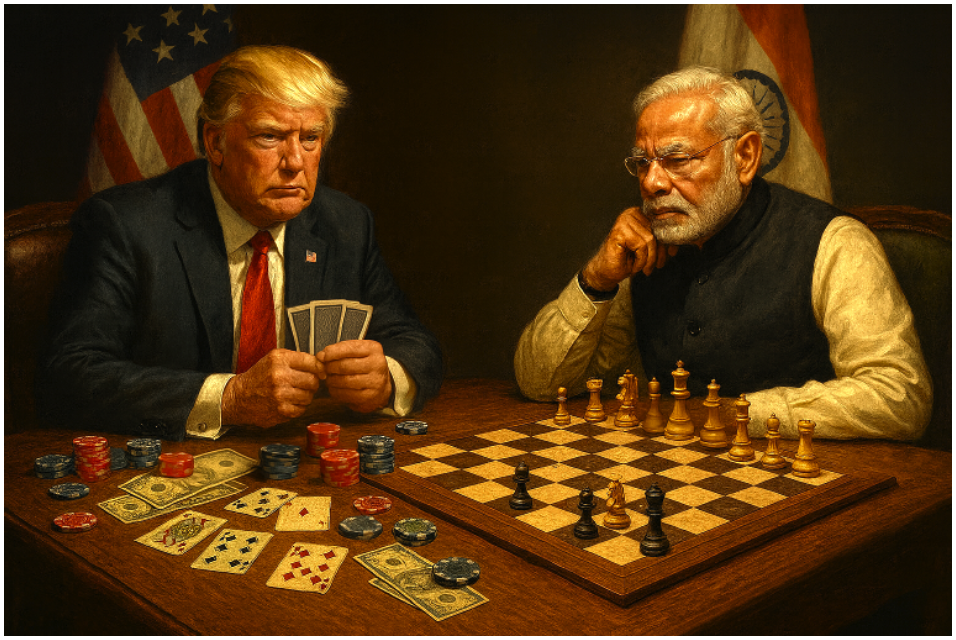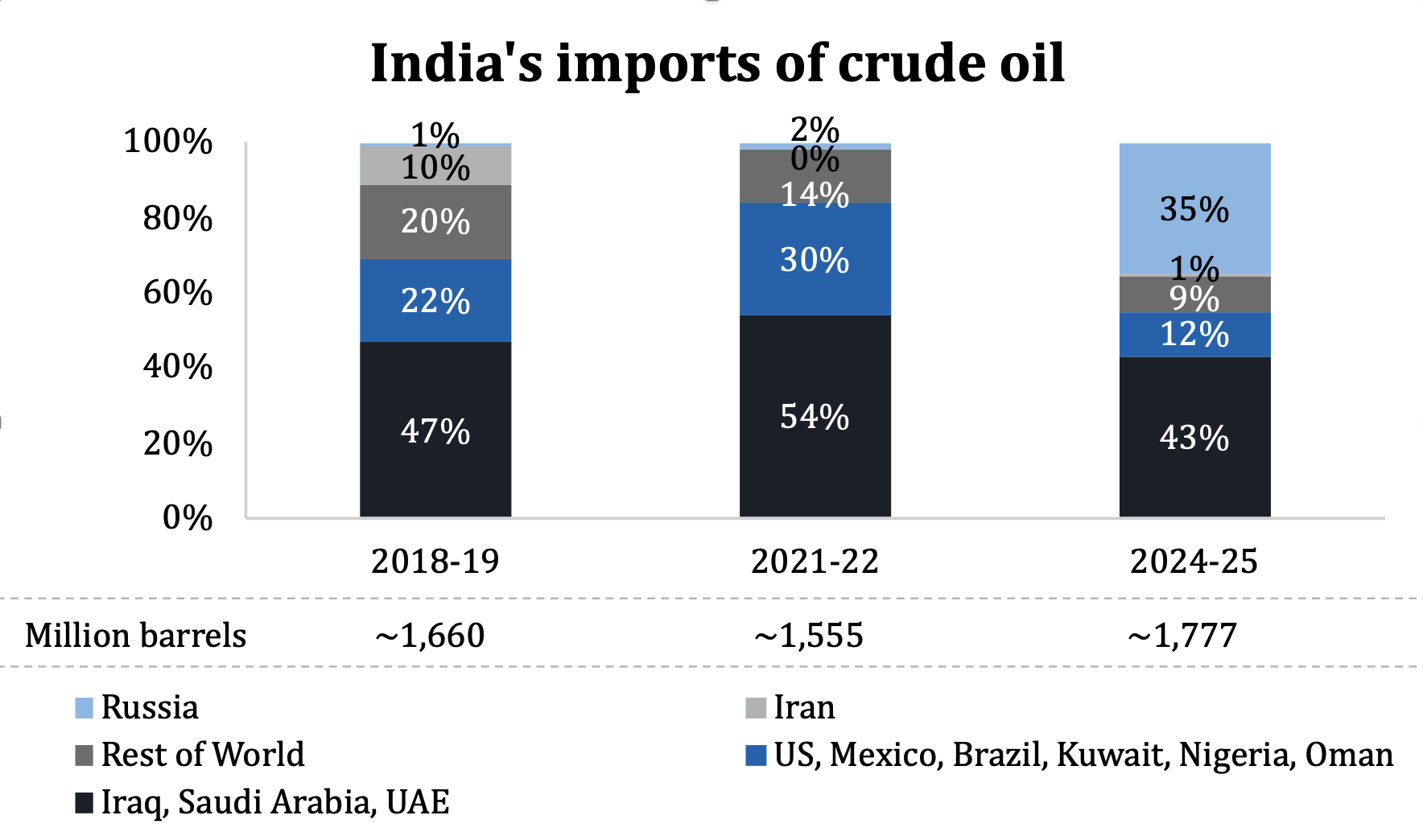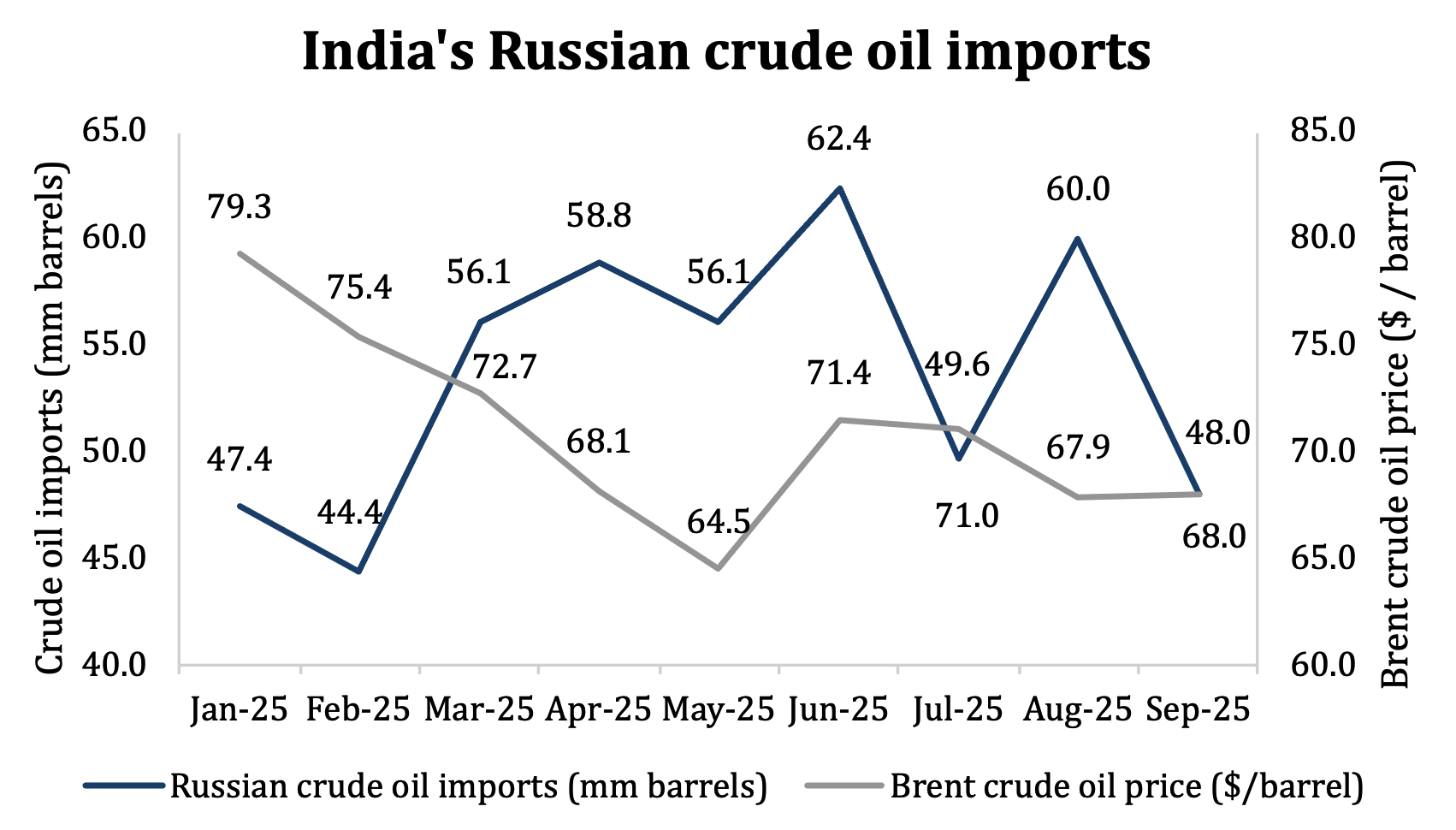Perspectives
Modi, Trump, and the Game of Oil, Tariffs and Trade
November 2025
- Percey Boomer, professional golfer and author of On Learning Golf.
Few arenas expose a leader’s skill and temperament more sharply than global diplomacy. There is no caddie to consult, no mulligans after a poorly judged swing, only public scrutiny and the burden of follow-through. In 2025, no two leaders have showcased that contrast more vividly than Donald Trump and Narendra Modi.
Donald Trump approaches global affairs like a poker game: surprise tariffs, public ultimatums, and bold bluffs designed for quick wins and maximum pressure, with a heavy emphasis on an agenda of maximizing the size of America’s “pot” of wealth. In comparison, Narendra Modi appears to be playing multi-dimensional chess, solving for multiple objectives including commerce, national pride, security interests, stability of global relationships and more. The 2025 dealings between the two leaders highlight this divide: Trump on the offensive, pressing for tactical victories using whim and bluster, while Modi on the defensive, steadfastly protecting India’s autonomy using a dispassionate and relatively conventional approach towards diplomacy.
In poker, players conceal their cards and bluff or posture to extract a win. Trump’s attacking style is best summarized by his own frequent threats that “you don’t have the cards” inferring that he somehow always does.

In chess, all pieces are visible, strategies transparent to all, and each move must be calibrated to anticipate the long arc of the game, a concept called vision. Modi, famously a lifelong chess lover, has gifted autographed chess sets to Kamala Harris and many other global leaders in the past, but is yet to offer any such supplication to Donald Trump.
The juxtaposition in games and styles came into sharp focus this year via two flashpoints: energy and trade.
Energy: Strategic Patience Meets Tactical Pressure
India's energy calculus underwent a seismic shift following the Ukraine war. Russia's share of India's crude imports surged from less than 1% before the conflict to 35% by 2025, a transition motivated by steep discounts. India also emerged as a crucial intermediary in global energy markets, refining Russian crude and re-exporting it to the very nations that had imposed sanctions on Moscow. This triangular trade allowed India to capture refining margins while enabling Western nations to conveniently maintain energy supplies without directly purchasing Russian crude (though continuing to directly purchase plenty of Russian gas).

India’s oil import strategy reflects a combination of market conditions, domestic interests, discounts, and not simply geopolitical alignment. When Russian crude offered the best terms, India jumped on the opportunity and doubled down. In Modi’s mind, these have been practical and tactical decisions, simply moving pawns as needed.
Modi's approach also carries lessons from a previous hand that India played poorly. In 2019, Trump reneged on Obama’s previously signed nuclear agreement with Iran and demanded that India stop importing Iranian oil. Modi acquiesced the very same day despite criticisms that India’s political and economic sovereignty was under attack. Iran, which then contributed to 10% of overall volumes, supplied oil under highly favourable terms, generating ~$10 billion of savings that India chose to forego in order to preserve Trump’s friendship. As it turns out, obeisance resulted in India absorbing higher costs while gaining little from Washington in return.
Once the Ukraine war broke out, Modi faced the ultimate chess dilemma, a zugzwang where any move would be suboptimal and yet a move had to be played. In light of the US’ renewed affection towards Pakistan (so much for friendships!!), Modi chose a different playbook and focused on India’s interests over a floozy Trump friendship.
Over the past few months, Trump has repeatedly condemned India's Russian oil imports, backing his displeasure with punitive tariffs. In October 2025, Trump publicly declared that Modi had agreed to "stop doing the Russian oil thing." Modi declined to even acknowledge Trump's comment. Instead, a junior spokesperson responded with a measured statement reiterating India's twin goals of stable prices and supply security, achieved by diversifying its oil sources. Ambiguity remains on whether Trump and Modi even spoke, as has happened on other occasions this year, notably when Trump proclaimed that he had brokered peace with Pakistan!

This is a classic contrast: Trump went all-in on a single hand, ostensibly since he held all the cards! Modi, meanwhile, moved stolidly, staunchly defending his king while gradually conceding or trading one piece at a time (ie: gradually lowering imports) while never ceding his position (energy independence and sovereignty).
Trade: A Calibrated Rebalance
The economic stakes between the two nations have never been higher. Bilateral trade reached a record high of $132.0 billion in the fiscal year ending March 2025, with India's exports at $86.7 billion and imports at $45.3 billion, a trade surplus that became Trump's primary grouse. As India's largest trading partner, the US absorbs one-fifth of its exports, a dependency that gives Washington leverage (ie: cards to threaten with).
In a series of Truth Social posts and press briefings, Trump criticized India’s trade surplus, imposed tariffs, and positioned himself as tough on trade. Of Trump’s 35+ public mentions of India in Jan-Oct 2025, 71% were focused on tariffs and trade, while 20% spoke of his glowing relationship with Modi, hardly reflected by the four occasions in August when Modi declined his phone call. In October, a claimed fifth call was formally denied. Modi’s refusal to get drawn into Trump’s antics is very deliberate, akin to a seasoned poker player not getting seduced into a cycle of raise/re-raise, and instead folding multiple hands, thereby consciously preserving chips for pivotal moments.
In the months following Trump’s tariff announcement in May, India’s exports to the US fell sharply. The 20% decline in just one quarter marked one of the steepest short-term drops in bilateral trade in nearly a decade. That hurts!
Despite the collapse of US-bound shipments, India demonstrated resilience by diversifying its export destinations. Total exports rose from $134.8 billion in June-September 2024 to $143.5 billion in the same period of 2025. Gains in markets such as the UAE, Hong Kong, and Spain alone offset nearly 80% of the US shortfall. This strategic pivot to alternative markets helped India maintain overall export growth while absorbing the tariff shock from its largest trading partner.

Conclusion: Long Games Require Patience
Rick Reilly, author of “Commander in Cheat: How golf explains Trump.”
Donald Trump is a famously enthusiastic golfer, but an even more famous cheat on the course. His ability to drive the ball impressively far with a flashy whack and fist thump is overshadowed by his lack of focus on his short game and his habit of cutting corners on the putting green.
While both leaders played aggressively on the global stage, the scoreboard at home tells a different story. Trump's high-stakes brinkmanship moved markets, yet exhausted voters. His approval has collapsed from 48% to 37% in 2025 and Democrats are gaining ground. Modi, by contrast, has consolidated his goodwill. Despite global headwinds, his ratings held between 62% and 58%, a testament to the durability of his chess-like approach: calibrated, cautious, and focused on structure over spectacle.

Trump and Modi are not playing the same game. Poker may win on the occasional night out. Chess played well can consistently win campaigns and reliably ensure economic progress. And sometimes, the smartest move is knowing which game your opponent is playing and declining to engage when not suitable
Back to Perspectives